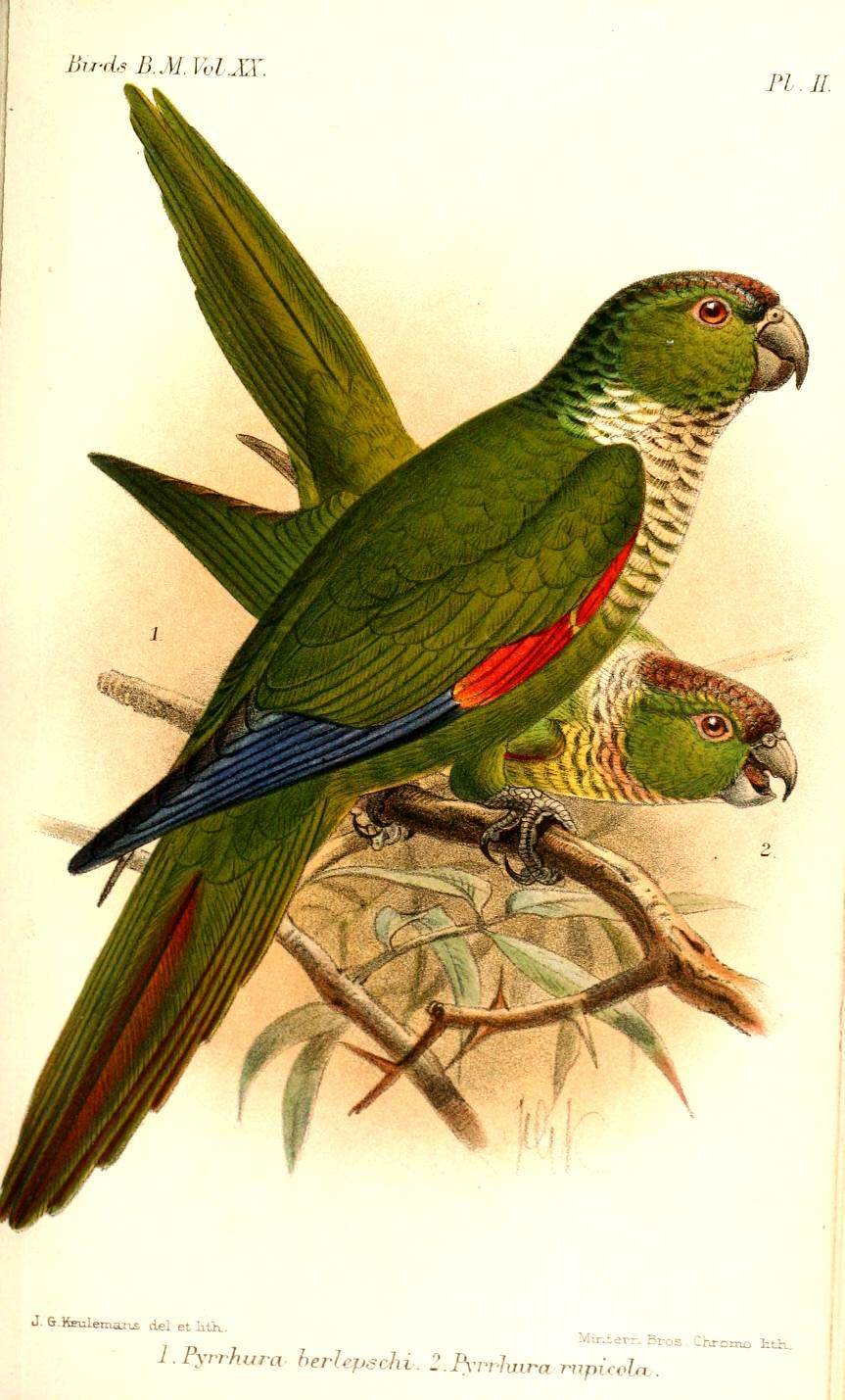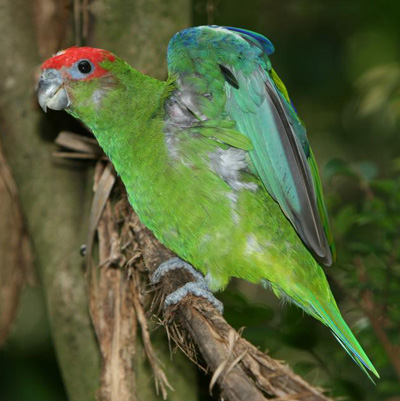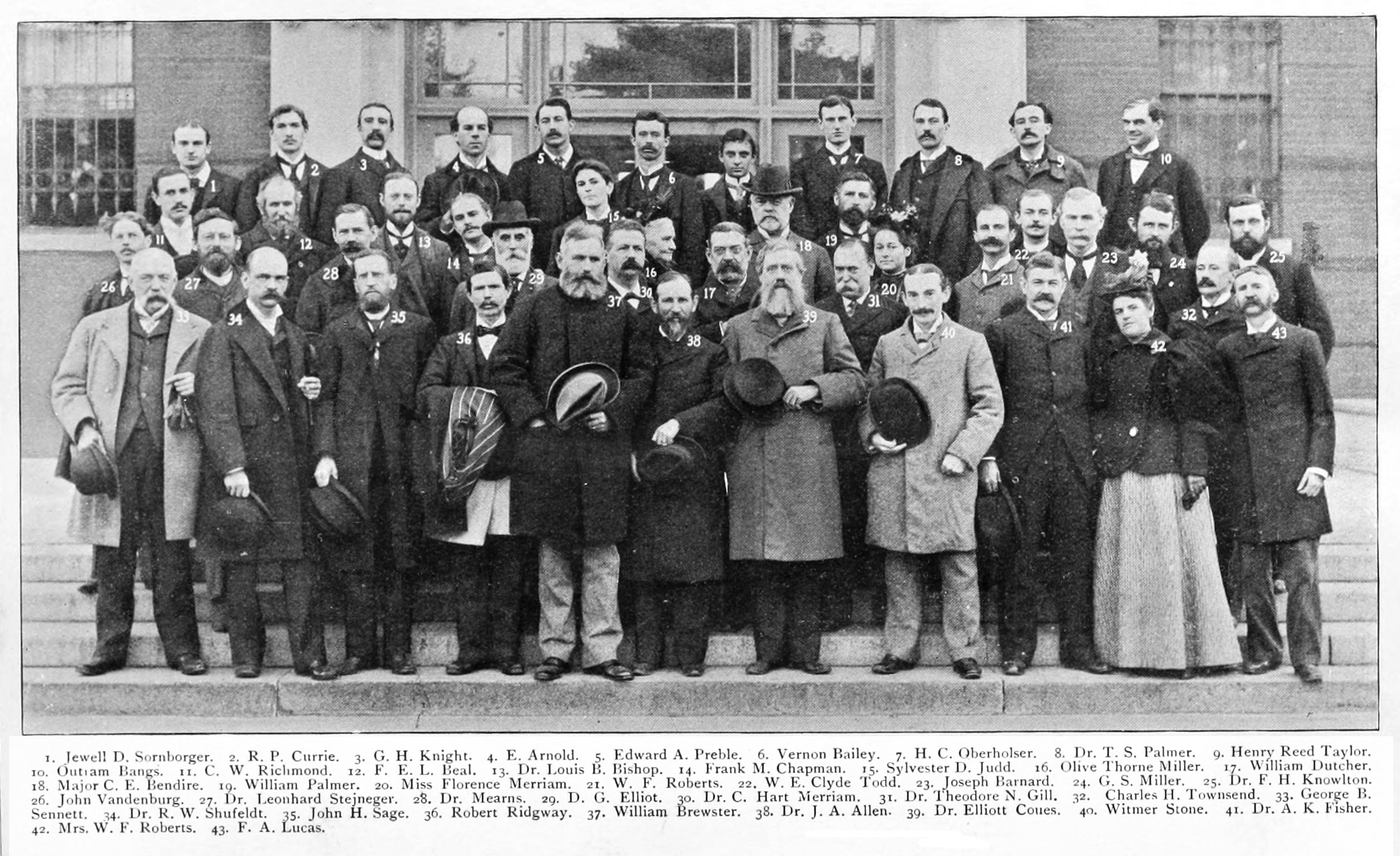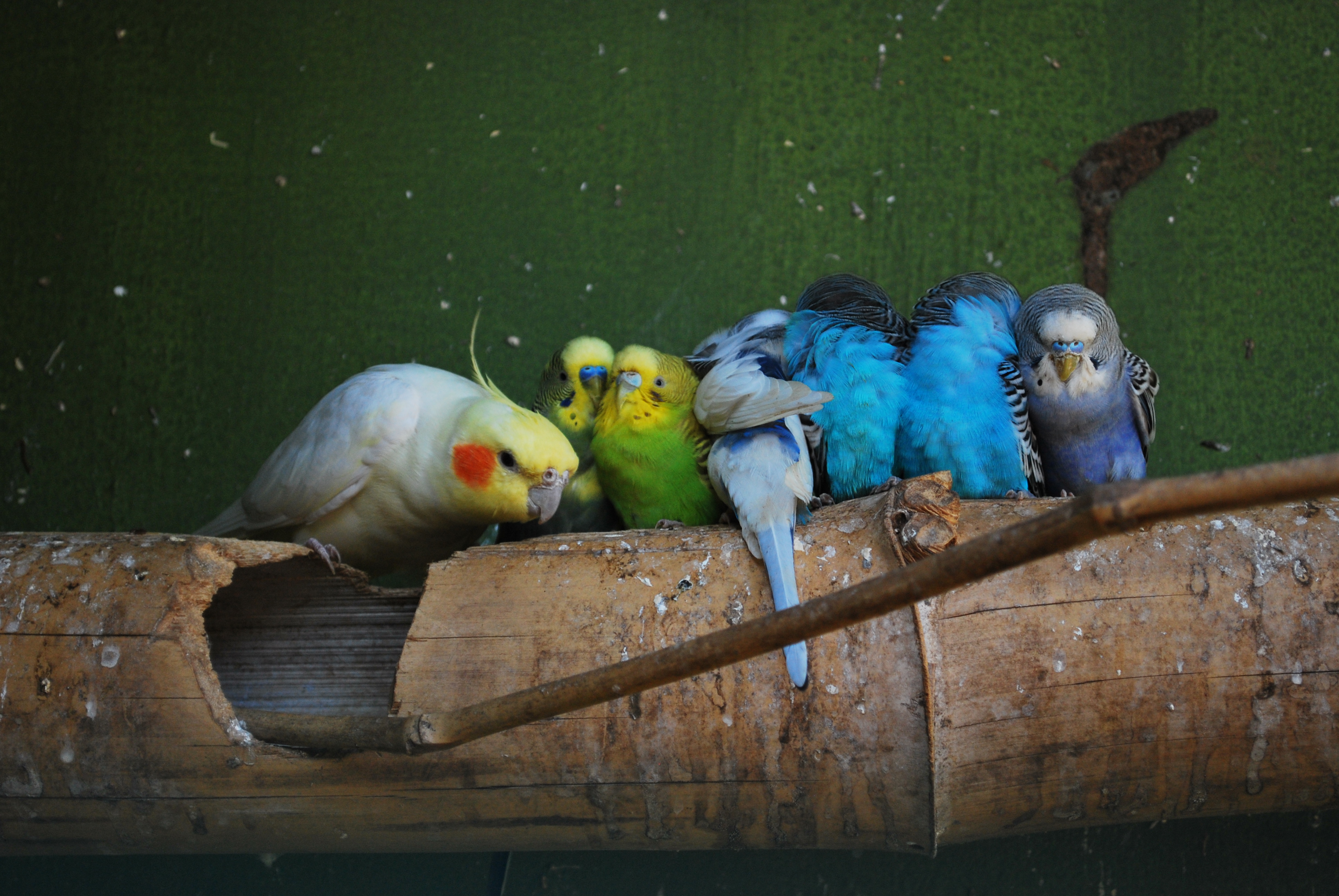|
Conures
Conures are a diverse, loosely defined group of small to medium-sized parrots. They belong to several genera within a long-tailed group of the New World parrot subfamily Arinae. Most conures belong to the tribe Arini, though ''Myiopsitta'' is an exception. The term "conure" is used primarily in bird keeping, though it has appeared in some scientific journals. The American Ornithologists' Union uses the generic term ''parakeet'' for all species elsewhere called ''conure'', though Joseph Forshaw, a prominent Australian ornithologist, uses ''conure''. Description Conures are either large parakeets or small parrots found in the Western Hemisphere. They are analogous in size and way of life to Afro-Eurasia's rose-ringed parakeets or the Australian parakeets. All living conure species live in Central and South America. The extinct ''Conuropsis carolinensis'', or Carolina parakeet was an exception. Conures are often called the clowns of the parrot world due to their constant ... [...More Info...] [...Related Items...] OR: [Wikipedia] [Google] [Baidu] |
Sun Conure
The sun conure (''Aratinga solstitialis''), also known as the sun parakeet, is a medium-sized, vibrantly colored parrot native to northeastern South America. The adult male and female are similar in appearance, with black beaks, predominantly golden-yellow plumage, orange-flushed underparts and face, and green and blue-tipped wings and tails. Sun conures are very social birds, typically living in flocks. They form monogamous pairs for reproduction, and nest in palm cavities in the tropics. Sun conures mainly feed on fruits, flowers, berries, blossoms, seeds, nuts, and insects. Conures are commonly bred and kept in aviculture and may live up to 30 years. This species is currently threatened by loss of habitat and trapping for plumage or the pet trade. Sun conures are now listed as endangered by the International Union for Conservation of Nature. Taxonomy The sun conure was one of the many species originally described by Carl Linnaeus in his landmark 1758 10th edition of ''System ... [...More Info...] [...Related Items...] OR: [Wikipedia] [Google] [Baidu] |
Parrot
Parrots (Psittaciformes), also known as psittacines (), are birds with a strong curved beak, upright stance, and clawed feet. They are classified in four families that contain roughly 410 species in 101 genus (biology), genera, found mostly in tropics, tropical and subtropics, subtropical regions. The four families are the Psittaculidae (Old World parrots), Psittacidae (African and New World parrots), Cacatuidae (cockatoos), and Strigopidae (New Zealand parrots). One-third of all parrot species are threatened by extinction, with a higher aggregate extinction risk (Red List Index, IUCN Red List Index) than any other comparable bird group. Parrots have a generally pantropical distribution with several species inhabiting temperateness, temperate regions as well. The greatest biodiversity, diversity of parrots is in South America and Australasia. Parrotsalong with Corvidae, ravens, crows, jays, and magpiesare among the most #Intelligence and learning, intelligent birds, and the abil ... [...More Info...] [...Related Items...] OR: [Wikipedia] [Google] [Baidu] |
Pyrrhura
''Pyrrhura'' (Greek Red/Fire Tail) is a genus of parrots in the Arini tribe. They occur in tropical and subtropical South America and southern Central America (Panama and Costa Rica). Most are restricted to humid forest and adjacent habitats, but one species, the blaze-winged parakeet, prefers deciduous or gallery woodland, and another, the Pfrimer's parakeet, is restricted to dry regions. Some species are highly endangered. Depending on the species, the total length range from . All have long, pointed tails, a mainly green plumage, and a relatively narrow, dark greyish to white eye-ring. Many have scaly or barred chest-patterns and a whitish, pale grey, buff or reddish ear-patch. They typically move around in small, noisy flocks, flying swiftly at or below canopy level. Once settled in a tree they tend to be silent (especially if aware of danger) and difficult to spot. They nest in a tree-crevice. Some species are popular in aviculture, where they are commonly referred t ... [...More Info...] [...Related Items...] OR: [Wikipedia] [Google] [Baidu] |
Arinae
The neotropical parrots or New World parrots comprise about 150 species in 32 genera found throughout South America, South and Central America, Mexico, the Caribbean islands and the southern United States. Among them are some of the most familiar and iconic parrots, including the blue and gold macaw, sun conure, and yellow-headed amazon. The parrots of the New World have been known to Europeans since Christopher Columbus, Columbus remarked upon them in his journal in 1492. Systematic descriptions of the birds were first available in German naturalist Georg Marcgraf's ''Historia Naturalis Brasiliae'' published in 1648, and English naturalist Mark Catesby's two-volume ''Natural History of Carolina, Florida and the Bahama Islands'' published in London in 1731 and 1743. Several species and one genus have become extinction, extinct in recent centuries. A second genus is extinct in the wild. Over a third of the Extant taxon, extant species are classified as Threatened species, threat ... [...More Info...] [...Related Items...] OR: [Wikipedia] [Google] [Baidu] |
Androglossini
Androglossini is a tribe of birds belonging to the family Psittacidae,Leo Joseph, Alicia Toon, Erin E. Schirtzinger, Timothy F. Wright, Richard Schodde. 2012. A revised nomenclature and classification for family-group taxa of parrots (Psittaciformes)'' Zootaxa 3205: 26–40. whose members inhabit the Neotropical region. It is one of the two tribes of the subfamily Arinae, with the other being Arini (tribe), Arini. Systematics References Androglossini, Psittacidae {{parrot-stub ... [...More Info...] [...Related Items...] OR: [Wikipedia] [Google] [Baidu] |
American Ornithologists' Union
The American Ornithological Society (AOS) is an ornithological organization based in the United States. The society was formed in October 2016 by the merger of the American Ornithologists' Union (AOU) and the Cooper Ornithological Society. Its members are primarily professional ornithologists, although membership is open to anyone with an interest in birds. The society publishes the two scholarly journals, Ornithology' (formerly '' The Auk)'' and Ornithological Applications' (formerly '' The Condor)'' as well as the '' AOS Checklist of North American Birds''. The American Ornithological Society claims the authority to establish standardized English bird names throughout North and South Americas. In 2013, the American Ornithologists' Union (AOU) announced a collaboration with the Cooper Ornithological Society, streamlining operations through joint meetings, a shared publishing office, and a reorientation of their journals. By October 2016, the AOU ceased its independent status, ... [...More Info...] [...Related Items...] OR: [Wikipedia] [Google] [Baidu] |
Scientific Journal
In academic publishing, a scientific journal is a periodical publication designed to further the progress of science by disseminating new research findings to the scientific community. These journals serve as a platform for researchers, scholars, and scientists to share their latest discoveries, insights, and methodologies across a multitude of scientific disciplines. Unlike professional or trade magazines, the articles are mostly written by scientists rather than staff writers employed by the journal. Scientific journals are characterized by their rigorous peer review process, which aims to ensure the validity, reliability, and quality of the published content. In peer review, submitted articles are reviewed by active scientists (peers) to ensure scientific rigor. With origins dating back to the 17th century, the publication of scientific journals has evolved significantly, advancing scientific knowledge, fostering academic discourse, and facilitating collaboration within ... [...More Info...] [...Related Items...] OR: [Wikipedia] [Google] [Baidu] |
Aviculture
Aviculture is the practice of keeping and breeding birds, especially of wild birds in captivity. Aviculture Aviculture is the practice of keeping birds (class '' Aves'') in captivity in controlled conditions, normally within the confines of a cage or an aviary. Some reasons for aviculture are: breeding birds as a hobby, a business like a zoo, or sometimes for research and conservation purposes to preserve and protect some endangered avian species that are at risk due to habitat destruction, the illegal wildlife trade, diseases, and natural disasters. Aviculture encourages conservation, provides education about avian species, provides companion birds for the public, and includes research on avian behaviour. Popular birds people like to keep and breed include budgerigars, cockatiels, finches, macaws, domestic canaries, columbidae (pigeons and doves), loriini (lories and lorikeets), cockatoos, conures, and African grey parrots. Avicultural societies In the UK, the Avicu ... [...More Info...] [...Related Items...] OR: [Wikipedia] [Google] [Baidu] |
Arini (tribe)
The Arini tribe (biology), tribe of the neotropical parrots is a monophyletic clade of macaws and parakeets (commonly called conures in aviculture) characterized by colorful plumage and long, tapering tails. They occur throughout Mexico, Central America, and South America, the Caribbean Islands, Caribbean and the southern United States. One genus and several species are Extinction, extinct; another genus is extinct in the wild. Two species are known only through subfossil remains. About a dozen hypothetical extinct species (see Lesser Antillean macaw#Extinct Caribbean macaws, Extinct Caribbean macaws) have been described, native to the Caribbean area. Among the Arini are some of the rarest birds in the world, such as Spix's macaw, which is extinct in the wild – fewer than 100 specimens survive in captivity. It also contains the largest flighted parrot in the world, the hyacinth macaw. Some species, such as the blue-and-yellow macaw and sun conure are popular pet parrots. Mo ... [...More Info...] [...Related Items...] OR: [Wikipedia] [Google] [Baidu] |
New World
The term "New World" is used to describe the majority of lands of Earth's Western Hemisphere, particularly the Americas, and sometimes Oceania."America." ''The Oxford Companion to the English Language'' (). McArthur, Tom, ed., 1992. New York: Oxford University Press, p. 33: "[16c: from the feminine of ''Americus'', the Latinized first name of the explorer Amerigo Vespucci (1454–1512). The name ''America'' first appeared on a map in 1507 by the German cartographer Martin Waldseemüller, referring to the area now called Brazil]. Since the 16th century, the term "New World" has been used to describe the Western Hemisphere, often referred to as the Americas. Since the 18th century, it has come to represent the United States, which was initially colonial British America until it established independence following the American Revolutionary War. The second sense is now primary in English: ... However, the term is open to uncertainties: ..." The term arose in the early 16th ... [...More Info...] [...Related Items...] OR: [Wikipedia] [Google] [Baidu] |
Genus
Genus (; : genera ) is a taxonomic rank above species and below family (taxonomy), family as used in the biological classification of extant taxon, living and fossil organisms as well as Virus classification#ICTV classification, viruses. In binomial nomenclature, the genus name forms the first part of the binomial species name for each species within the genus. :E.g. ''Panthera leo'' (lion) and ''Panthera onca'' (jaguar) are two species within the genus ''Panthera''. ''Panthera'' is a genus within the family Felidae. The composition of a genus is determined by taxonomy (biology), taxonomists. The standards for genus classification are not strictly codified, so different authorities often produce different classifications for genera. There are some general practices used, however, including the idea that a newly defined genus should fulfill these three criteria to be descriptively useful: # monophyly – all descendants of an ancestral taxon are grouped together (i.e. Phylogeneti ... [...More Info...] [...Related Items...] OR: [Wikipedia] [Google] [Baidu] |
Primolius
''Primolius'' is a genus of macaws comprising three species, which are native to South America. They are mainly green parrots with complex colouring including blues, reds and yellows. They have long tails, a large curved beak, and bare facial skin typical of macaws in general. They are less than 50 cm long, much smaller than the macaws of the ''Ara (genus), Ara'' genus. Macaws less than about 50 cm long, including the genus ''Primolius'', are sometimes called "mini-macaws". Taxonomy The genus has three monotypic species: Genus ''Primolius'', Bonaparte 1857: *Blue-headed macaw, ''Primolius couloni'' (Sclater PL, 1876) *Blue-winged macaw or Illiger's macaw, ''Primolius maracana'' (Vieillot, 1816) *Golden-collared macaw, ''Primolius auricollis'' (Cassin, 1853) Species See also *List of macaws *List of vulnerable birds, List of Vulnerable birds References {{taxonbar, from=Q337753 Primolius, Bird genera Arini (tribe) Taxa named by Charles Lucien Bonap ... [...More Info...] [...Related Items...] OR: [Wikipedia] [Google] [Baidu] |









